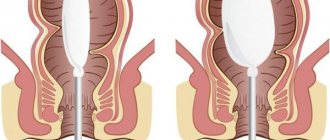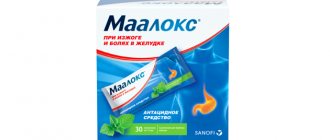Tumor disintegration is a natural consequence of too active growth of a cancer node along the periphery or a complication of an excessively high response of a common malignant process to chemotherapy.
Not every patient has to face the severe problem of the disintegration of the cancer process, but with any intensity of clinical manifestations, the condition initiated by the disintegration of the malignant tumor directly threatens life and radically changes the therapeutic strategy.
Tumor decay: what is it?
Disintegration is the destruction of a malignant neoplasm; it would seem that it is precisely disintegration that must be strived for in the process of antitumor therapy. In fact, during chemotherapy, cancer cells are destroyed, only the killing is organic and not massive, but of single cells and small cell colonies - without the death of a large mass of tissue with the release of toxic contents into the blood from decaying cells.
Under the influence of chemotherapy, cancer cells do not decay, but undergo the process of apoptosis—programmed death. The remains of cancer cells are actively utilized by phagocytes and carried away from the maternal formation, and in the place of the dead, normal scar tissue appears, very often not visually detectable.
Regression of a malignant neoplasm in the form of apoptosis occurs slowly; if you observe the neoplasm at intervals of several days, you will notice how along the periphery the cancerous node is replaced by completely normal tissue and shrinks in size.
During decay, the cancerous conglomerate is not replaced by healthy connective tissue cells; dead cell layers form into a focus of necrosis, delimited from the rest of the cancer tumor by a powerful inflammatory shaft. Inside a malignant neoplasm, necrosis is not able to organize itself and be replaced by a scar; it only grows, capturing new areas of the cancer node, thereby destroying the tumor vascular network. From the dead focus, products of cellular decay enter the bloodstream, causing intoxication.
In some malignant diseases of the blood or lymphatic tissue, decay also occurs during chemotherapy, but without the formation of a necrosis zone, while massively dying cancer cells release their contents into the blood, which does not have time to be utilized by phagocytes, “clogs” the kidneys and is carried into the vessels of other organs.
The massive release of cellular substrate causes severe intoxication that can lead to death.
Types and forms of necrosis
There are 2 main forms of pathology:
- Dry necrosis. In medicine it is also called coagulation. With it, the protein coagulates, which soon becomes like a curd mass. The skin in problem areas will turn yellow-gray. With this form, ulcers appear in the place where dead tissue is rejected, which quickly turn into ulcers. After opening them, a fistula is formed. At the initial stages of the development of the disease, the following symptoms may be noted: increased body temperature, problems with the functioning of the problem organ.
- Wet necrosis. The medical term is liquefaction necrosis. It manifests itself as an active increase in soft tissues. In areas of dead tissue, they liquefy and a putrefactive environment is formed for the spread of harmful microorganisms. In addition, a rotten smell appears, with which nothing can be done, even if treatment is carried out. This form of the disease most often affects the skin, brain and other organs in which a lot of fluid accumulates. With the active development of the disease, complications may appear. If necrosis affects the brain, it is possible that the patient may lose memory.
In addition to forms, there are several types:
- bedsores - appear in patients with a bedridden lifestyle who are not provided with proper care;
- gangrene - appears after actively developing necrosis. Accompanied by necrosis of the skin, mucous membranes, muscle tissue;
- heart attack - detected when blood suddenly stops flowing to a certain organ;
- aseptic – appears when the head of the femur is injured. Its symptoms are unbearable pain in the affected area and the inability to move independently. Appear 2-3 days after the onset of the disease;
- fibrinoid - detected in the walls of blood vessels.
Causes of disintegration of a malignant tumor
The disintegration of a cancerous formation is initiated by only two reasons: the very activity of the cells of the malignant tumor and chemotherapy.
The first cause of spontaneous decay is characteristic of solid neoplasms, that is, cancer, sarcomas, malignant brain tumors and melanoma. The second cause of decay is typical for oncohematological diseases - leukemia and lymphomas; it is extremely rare in oncological processes.
Over time, the central part of a malignant neoplasm of any morphological origin begins to experience difficulties with the delivery of nutrients. This happens because cancer cells multiply faster than the vascular network that “feeds” them is formed. Starving cell layers die, which is manifested by disintegration with the formation of a zone of necrosis, delimited from living tumor tissue, with the gradual formation of a cavity in which slow rotting processes occur.
If the necrotic cavity is close to the skin, it can break out in the form of a disintegrating “ulcer” and the formation of a non-healing ulcer, for example, in the mammary gland. In the lung, an X-ray will reveal a dark “hole” inside a cancerous node with decay with a separately located island piece of necrotic tissue inside – a sequestrum.
The second variant of decay, typical for oncohematological diseases, can be ascertained by the clinical symptoms of severe intoxication with complications - tumor lysis syndrome (TLS) and biochemical blood tests, where the concentration of uric acid, potassium and phosphorus is sharply increased, but calcium is significantly reduced. The specific motivating factor for the development of SOL is an extensive malignant lesion with a very high sensitivity to chemotherapy.
In oncological processes - cancers, sarcomas, melanoma, the reaction to cytostatics is predominantly moderate and not so rapid, therefore SOL is fundamentally possible only in exceptional cases of small-cell, undifferentiated or anaplastic malignant process.
Book a consultation 24 hours a day
+7+7+78
Bibliography
1. Freund A, Orjalo AV, Desprez PY, Campisi J. Inflammatory networks during cellular senescence: causes and consequences. Trends Mol Med (2010) 16(5):238–46. doi: 10.1016/j.molmed.2010.03.003 2. Singh T, Newman AB. Inflammatory markers in population studies of aging. Ageing Res Rev (2011) 10(3):319–29. doi: 10.1016/j.arr.2010.11.002 3. Trayhurn P. Endocrine and signaling role of adipose tissue: new perspectives on fat. Acta Physiol Scand (2005) 184(4):285–93. Review. doi: 10.1111/j.1365-201X.2005.01468.x 4. Schrager MA, Metter EJ, Simonsick E, Ble A, Bandinelli S, Lauretani F, et al. Sarcopenic obesity and inflammation in the InCHIANTI study. J Appl Physiol (2007) 102(3):919–25. doi: 10.1152/japplphysiol.00627.2006 5. Ortega Martinez de Victoria E, Xu X, Koska J, Francisco AM, Scalise M, Ferrante AW Jr, Krakoff J. Macrophage content in subcutaneous adipose tissue: associations with adiposity, age, inflammatory markers, and whole-body insulin action in healthy Pima Indians. Diabetes (2009) 58(2):385–93. 6. Weisberg SP, McCann D, Desai M, Rosenbaum M, Leibel RL, Ferrante AW. Obesity is associated with macrophage accumulation in adipose tissue. J Clin Invest (2003) 112(12):1796–808. doi: 10.1172/JCI200319246 7. Arnson Y, Shoenfeld Y, Amital H. Effects of tobacco smoke on immunity, inflammation and autoimmunity. J Autoimmun (2010) 34(3):J258–65. doi: 10.1016/j.jaut.2009.12.003 8. Straub RH, Schradin C. Chronic inflammatory systemic diseases: an evolutionary trade-off between acutely beneficial but chronically harmful programs. Evol Med Public Health (2016) 2016(1):eow001–51. doi: 10.1093/emph/eow001 9. Franceschi C, Campisi J. Chronic inflammation (inflammaging) and its potential contribution to age-associated diseases. J Gerontol A Biol Sci Med Sci (2014) 69(Suppl 1):S4–9. doi: 10.1093/gerona/glu057 10. Beyer I, Mets T, Bautmans I. Chronic low-grade inflammation and age-related sarcopenia. Curr Opin Clin Nutr Metab Care (2012) 15(1):12–22. doi: 10.1097/MCO.0b013e32834dd297 11. dall'olio F, Vanhooren V, Chen CC, Slagboom PE, Wuhrer M, Franceschi C. N-glycomic biomarkers of biological aging and longevity: a link with inflammaging. Ageing Res Rev (2013) 12(2):685–98. Review. doi: 10.1016/j.arr.2012.02.002 12. Ohtsubo K, Marth JD. Glycosylation in cellular mechanisms of health and disease. Cell (2006) 126(5):855–67. Review. doi: 10.1016/j.cell.2006.08.019 13. Parekh R, Isenberg D, Ansell B, Roitt I, Dwek R, Rademacher T. Galactosylation OF IgG associated oligosaccharides: reduction in patients with adult and juvenile onset rheumatoid arthritis AND relation to disease activity. Lancet (1988) 331(8592):966–9. doi: 10.1016/S0140-6736(88)91781-3 14. Vanhooren V, Desmyter L, Liu XE, Cardelli M, Franceschi C, Federico A, et al. N-glycomic changes in serum proteins during human aging. Rejuvenation Res (2007) 10(4):521–31. doi: 10.1089/rej.2007.0556 15. Ruhaak LR, Uh HW, Beekman M, Hokke CH, Westendorp RG, Houwing-Duistermaat J, et al. Plasma protein N-glycan profiles are associated with calendar age, family longevity and health. J Proteome Res (2011) 10(4):1667–74. doi: 10.1021/pr1009959 16. Zou S, Meadows S, Sharp L, Jan LY, Jan YN. Genome-wide study of aging and oxidative stress response in Drosophilamelanogaster. Proc Natl Acad Sci USA (2000) 97(25):13726–31. doi: 10.1073/pnas.260496697 17. Cingle KA, Kalski RS, Bruner WE, O'Brien CM, Erhard P, Wyszynski RE. Age-related changes of glycosidases in human retinal pigment epithelium. Curr Eye Res (1996) 15(4):433–8. doi: 10.3109/02713689608995834 18. Zhu M, Lovell KL, Patterson JS, Saunders TL, Hughes ED, Friderici KH. Beta-mannosidosis mice: a model for the human lysosomal storage disease. Hum Mol Genet (2006) 15(3):493–500. doi: 10.1093/hmg/ddi465 19. Zhang Q, Raoof M, Chen Y, Sumi Y, Sursal T, Junger W, et al. Circulating mitochondrial DAMPs cause inflammatory responses to injury. Nature (2010) 464(7285):104–7. doi: 10.1038/nature08780 20. dall'olio F, Vanhooren V, Chen CC, Slagboom PE, Wuhrer M, Franceschi C. N-glycomic biomarkers of biological aging and longevity: a link with inflammaging. Ageing Res Rev (2013) 12(2):685–98. doi: 10.1016/j.arr.2012.02.002 21. Kinross J, Nicholson JK. Gut microbiota: dietary and social modulation of gut microbiota in the elderly. Nat Rev Gastroenterol Hepatol (2012) 9(10):563–4. doi: 10.1038/nrgastro.2012.169 22. Claesson MJ, Cusack S, O'Sullivan O, Greene-Diniz R, de Weerd H, Flannery E, et al. Composition, variability, and temporal stability of the intestinal microbiota of the elderly. Proc Natl Acad Sci USA (2011) 108(Suppl. 1):4586–91. doi: 10.1073/pnas.1000097107 23. Toward R, Montandon S, Walton G, Gibson GR. Effect of prebiotics on the human gut microbiota of elderly persons. Gut Microbes(2012) 3(1):57–60. doi: 10.4161/gmic.19411 24. Claesson MJ, Jeffery IB, Conde S, Power SE, O'Connor EM, Cusack S, et al. Gut microbiota composition correlates with diet and health in the elderly. Nature (2012) 488(7410):178–84. doi: 10.1038/nature11319 25. de Magalhães JP, Passos JF. Stress, cell senescence and organismal aging. Mech Ageing Dev (2017). doi: 10.1016/j.mad.2017.07.001 26. Sanada F, Taniyama Y, Azuma J, Iekushi K, Dosaka N, Yokoi T, et al. Hepatocyte growth factor, but not vascular endothelial growth factor, attenuates angiotensin II-induced endothelial progenitor cell senescence. Hypertension (2009) 53(1):77–82. doi: 10.1161/HYPERTENSIONAHA.108.120725 27. Tchkonia T, Zhu Y, van Deursen J, Campisi J, Kirkland JL. Cellular senescence and the senescent secretory phenotype: therapeutic opportunities. J Clin Invest (2013) 123(3):966–72. doi: 10.1172/JCI64098 28. He S, Sharpless NE. Senescence in health and disease. Cell (2017) 169(6):1000–11. doi: 10.1016/j.cell.2017.05.015 29. Childs BG, Baker DJ, Wijshake T, Conover CA, Campisi J, van Deursen JM. Senescent intimal foam cells are deleterious at all stages of atherosclerosis. Science (2016) 354(6311):472–477. doi: 10.1126/science.aaf6659 30. Jeon OH, Kim C, Laberge RM, Demaria M, Rathod S, Vasserot AP, et al. Local clearance of senescent cells attenuates the development of post-traumatic osteoarthritis and creates a pro-regenerative environment. Nat Med (2017) 23(6):775–81. doi: 10.1038/nm.4324 31. Baker DJ, Wijshake T, Tchkonia T, Lebrasseur NK, Childs BG, van de Sluis B, et al. Clearance of p16Ink4a-positive senescent cells delays aging-associated disorders. Nature (2011) 479(7372):232–6. doi: 10.1038/nature10600 32. Shaw AC, Goldstein DR, Montgomery RR. Age-dependent dysregulation of innate immunity. Nat Rev Immunol (2013) 13(12):875–87. doi: 10.1038/nri3547 33. Aw D, Silva AB, Palmer DB. Immunosenescence: emerging challenges for an aging population. Immunology (2007) 120(4):435–46. doi: 10.1111/j.1365-2567.2007.02555.x 34. Gruver AL, Hudson LL, Sempowski GD. Immunosenescence of aging. J Pathol (2007) 211(2):144–56. Review. doi: 10.1002/path.2104 35. Chu AJ. Blood coagulation as an intrinsic pathway for proinflammation: a mini review. Inflamm Allergy Drug Targets (2010) 9(1):32–44. Review. doi: 10.2174/187152810791292890 36. Hess K, Grant PJ. Inflammation and thrombosis in diabetes. Thromb Haemost (2011) 105(Suppl 1):S43–54. doi: 10.1160/THS10-11-0739 37. Sanada F, Taniyama Y, Muratsu J, Otsu R, Iwabayashi M, Carracedo M, et al. Activated factor X induces endothelial cell senescence through IGFBP-5. Sci Rep (2016) 6:35580. doi: 10.1038/srep35580 38. Biagi E, Candela M, Franceschi C, Brigidi P. The aging gut microbiota: new perspectives. Aging Res. Rev. (2011) 10(4):428–9. doi: 10.1016/j.arr.2011.03.004 39. Chu AJ. Tissue factor, blood coagulation, and beyond: an overview. Int J Inflam (2011) 2011:367284–30. doi: 10.4061/2011/367284 40. Favaloro EJ, Franchini M, Lippi G. Aging hemostasis: changes to laboratory markers of hemostasis as we age - a narrative review. Semin Thromb Hemost (2014) 40(6):621–33. doi: 10.1055/s-0034-1384631 41. Sanada F, Muratsu J, Otsu R, Shimizu H, Koibuchi N, Uchida K, et al. Local production of activated factor X in atherosclerotic plaque induced vascular smooth muscle cell senescence. Sci Rep (2017) 7(1):17172. doi: 10.1038/s41598-017-17508-6 42. Mega JL, Braunwald E, Wiviott SD, Bassand JP, Bhatt DL, Bode C, et al. ATLAS ACS 2–TIMI 51 Investigators. Rivaroxaban in patients with a recent acute coronary syndrome. N Engl J Med (2012) 366(1):9–19. 43. Spronk HM, de Jong AM, Crijns HJ, Schotten U, van Gelder IC, Ten Cate H. Pleiotropic effects of factor Xa and thrombin: what to expect from novel anticoagulants. Cardiovasc Res (2014) 101(3):344–51. doi: 10.1093/cvr/cvt343 44. Kamio N, Hashizume H, Nakao S, Matsushima K, Sugiya H. Plasmin is involved in inflammation via protease-activated receptor-1 activation in human dental pulp. Biochem Pharmacol (2008) 75(10):1974–80. doi: 10.1016/j.bcp.2008.02.018 45. Carmo AA, Costa BR, Vago JP, de Oliveira LC, Tavares LP, Nogueira CR, et al. Plasmin induces in vivo monocyte recruitment through protease-activated receptor-1-, MEK/ERK-, and CCR2-mediated signaling. J Immunol (2014) 193(7):3654–63. doi: 10.4049/jimmunol.1400334 46. Kojima H, Kunimoto H, Inoue T, Nakajima K. The STAT3-IGFBP5 axis is critical for IL-6/gp130-premature senescence in human fibroblasts. Cell Cycle (2012) 11(4):730–9. doi: 10.4161/cc.11.4.19172 47. Yasuoka H, Hsu E, Ruiz XD, Steinman RA, Choi AM, Feghali-Bostwick CA. The fibrotic phenotype induced by IGFBP-5 is regulated by MAPK activation and egr-1-dependent and -independent mechanisms. Am J Pathol (2009) 175(2):605–15. doi: 10.2353/ajpath.2009.080991 48. Sparkenbaugh EM, Chantrathammachart P, Mickelson J, van Ryn J, Hebbel RP, Monroe DM, et al. Differential contribution of FXa and thrombin to vascular inflammation in a mouse model of sickle cell disease. Blood (2014) 123(11):1747–56. doi: 10.1182/blood-2013-08-523936 49. Roos CM, Zhang B, Palmer AK, Ogrodnik MB, Pirtskhalava T, Thalji NM, et al. Chronic senolytic treatment alleviates established vasomotor dysfunction in aged or atherosclerotic mice. Aging Cell (2016) 15(5):973–7. doi: 10.1111/acel.12458 50. Lehmann M, Korfei M, Mutze K, Klee S, Skronska-Wasek W, Alsafadi HN, et al. Senolytic drugs target alveolar epithelial cell function and attenuate experimental lung fibrosis ex vivo. Eur Respir J (2017) 50(2):1602367. doi: 10.1183/13993003.02367-2016 51. Collins JA, Diekman BO, Loeser RF. Targeting aging for disease modification in osteoarthritis. Curr Opin Rheumatol (2017). 52. Farr JN, Xu M, Weivoda MM, Monroe DG, Fraser DG, Onken JL, et al. Targeting cellular senescence prevents age-related bone loss in mice. Nat Med (2017) 23(9):1072–9. doi: 10.1038/nm.4385
Disclaimer: All statements expressed in this article are the views of the authors and do not necessarily reflect the views of affiliated organizations, the publisher, editors and reviewers. Any product or manufacturer's statement is not warranted or endorsed by the publisher.
Symptoms of the collapse of a malignant tumor
The clinical result of the spontaneous disintegration of a cancerous tumor is chronic intoxication, often combined with symptoms of generalized inflammation due to the formation of a purulent focus. Symptoms are varied, but the majority experience progressively increasing weakness, an increase in temperature from low-grade to fever, palpitations and even arrhythmias, changes in consciousness - stupor, loss of appetite and rapid weight loss.
Local manifestations of spontaneous destruction of a cancer tumor are determined by its location:
- breast cancer, melanoma and skin carcinoma, oral tumors - a purulent, profusely secreting open ulcer with rough, undermined edges, often emitting a putrid odor;
- disintegrating lung carcinoma - when a necrotic cavity is perforated into a large bronchus, a paroxysmal cough with purulent sputum occurs, often streaked with blood, and sometimes profuse pulmonary bleeding occurs;
- destruction of neoplasms of the gastrointestinal tract - development of local peritonitis when a cancerous conglomerate perforates into the abdominal cavity, bleeding with black stools and vomiting of coffee grounds;
- disintegrating uterine carcinoma - intense pain in the lower abdomen, difficulty urinating and defecating with the formation of purulent fistulas.
Tumor lysis syndrome in leukemia and lymphoma is a potentially fatal condition leading to:
- first of all, to the deposition of uric acid crystals in the renal tubules with disabling function and acute renal failure;
- additionally damaging the kidneys is rapid acidification of the blood - lactic acidosis;
- a decrease in calcium levels and an increase in phosphates initiates a convulsive syndrome, complemented by neurological manifestations due to the release of cytokines;
- increased potassium negatively affects cardiac activity;
- the release of biologically active substances from cells leads to increased permeability of small blood vessels, which reduces the level of proteins and sodium in the blood, reduces the volume of circulating plasma, clinically manifested by a drop in pressure and worsening kidney damage;
- extensive and profound metabolic disorders in all organ systems resulting in multiple organ failure.
What is the disease and how does it progress?
Necrosis is one of the most terrible diseases, in which the vital activity of tissues, cells and internal organs ceases. Most often, this condition is caused by the activity of harmful microorganisms, as well as chemical, mechanical and thermal agents that have a destructive effect. The disease can also manifest itself as a result of severe allergic reactions or due to problems with blood circulation and severe hypothermia in this area. With severe overheating, excessive metabolism is noted, and in case of problems with blood circulation, the likelihood of a necrotic process increases.
The first signs of pathology are numbness and a low sensitivity threshold. In this case, you should immediately seek help from a specialist. Additional symptoms include pale skin, which is associated with impaired blood circulation. Over time, the skin may become an uncharacteristic shade - yellow, gray, green or blue. If the legs are affected, the patient complains of rapid fatigue when walking, a feeling of cold and cramps. As a result, trophic ulcers are formed that will not heal and will soon lead to necrosis of tissue and skin.
All this together negatively affects the functioning of the central nervous system, respiratory organs, kidneys and liver, the general condition noticeably worsens, the immune system weakens, metabolism is disrupted, and blood diseases may appear.
Treatment of tumor decay
For effective treatment of a disintegrating tumor conglomerate, it is necessary to restore intratumoral nutrition through the rapid formation of a new vascular network, which is completely impossible. Therefore, in case of spontaneous decay, they resort to symptomatic therapy, including palliative surgical - “sanitary” interventions.
Formally, with a decaying tumor, radical surgery is impossible; the disease is often considered inoperable, but chemotherapy and radiation are excluded from the program because they can worsen necrosis. The desperate situation of the patient and the likelihood of massive bleeding from a large vessel eaten away by cancer justifies the performance of a palliative operation, the main goal of which is to remove the source of chronic inflammation and intoxication.
Tumor lysis syndrome is treated with many hours of drip infusions with increased diuresis - urine excretion, binding of uric acid with special medications. At the same time, the functioning of the cardiovascular system is supported, intoxication and inflammation are stopped. When acute renal failure develops, hemodialysis is performed.
Tumor lysis syndrome is difficult to treat, but its symptoms can be prevented or at least reduced. Prevention begins a few days before the course of chemotherapy and continues for at least three days after the end of the cycle. In addition to special drugs that remove uric acid, long-term droppers are prescribed, missing trace elements are introduced, and excess trace elements are removed or bound with other medications.
Prevention of tumor lysis has become the standard of care for hematologic oncology patients, which cannot be said about cancer patients with disintegrating malignant processes, for whom it is very difficult to find a surgeon willing to perform palliative surgery. Intervention for sanitary reasons is refused due to the difficulty of caring for a seriously ill patient after extensive surgery. In our clinic, no one is denied help.
| Read more about treatment at Euroonko | |
| Emergency oncology care | from 12,100 rub. |
| Palliative care in Moscow | from 44,300 rubles per day |
| Oncologist consultation | from 5,100 rub. |
Book a consultation 24 hours a day
+7+7+78










